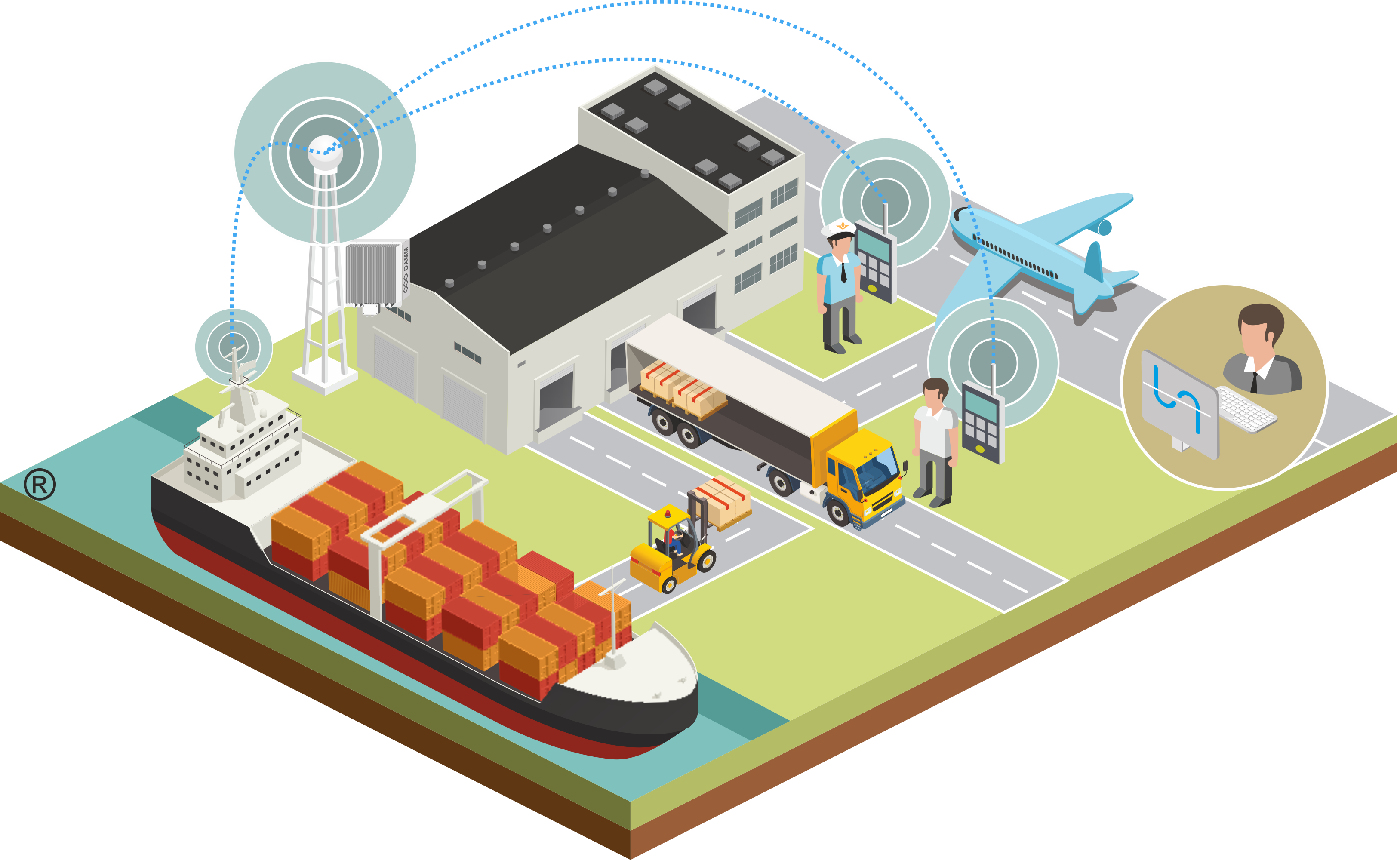While creating a professional radio communication system, we should consider the territories of airports and seaports with a high density of subscribers in a relatively small area. At the same time as integration with external radio communication networks of other protocols, including analog ones could crucial.
Usually, in the area of the radio communication system, many independent organizations and services operate simultaneously, carrying out various operations. Whether it is an airport, a seaport or a river port with a large logistic load, it is rational to build an integrated professional radio communication system for interactions between different organizations within the same network. It is critical to separate emergency services and regular ones according to its priorities. In this case, you can be sure that information about the events will reach all recipients, and emergency circumstances will not have tragic consequences.
First, it is necessary to evaluate which services will be supported in the future radio network.

If it is required:
– full integration with the telephone network (IP or ISDN);
– full group interaction of subscribers;
– independence from public communication networks;
– guaranteed connectivity;
– priorities of some subscribers with the ability to automatically disconnect calls of less priority subscribers;
– collection of location data of subscribers carrying out active calls;
– call recording
If any of the services, listed above is mandatory, then the creation of the radio communication system must be carried out on equipment that meets the TETRA standard. The openness of the TETRA digital standard makes it possible to use subscriber terminals of different manufacturers with the infrastructure of another one.
The use of TETRA equipment will allow you to implement functions that do not exist in other protocols and standards:
– make it is possible for subscribers to carry out simultaneous active calls and data transmission, since the TETRA supports an auxiliary control channel;
– increase the battery life of subscribers, due to the adaptive RF power control in subscriber terminals;
– provide a seamless handover between base stations while maintaining an active call;
– to form a multi-level hierarchy of subscriber priorities and select 4 categories of subscribers with the rights to disconnect active calls;
– provide full duplex telephone call for emergency operation or improved communication;
Of the limited number of manufacturers of TETRA standard equipment, only DAMM Cellular Systems A / S presented a completely autonomous system that has category 5 moisture protection not only for the BS422 base station, but also for the SB422 controller. The ability to increase the throughput of a base station without additional equipment is also possible only when using the DAMM Cellular Systems A/S infrastructure with BS422 base stations. And the low cost of high-quality DAMM equipment compared to other manufacturers makes the project efficient and profitable.
In seaports, the main attention should be paid to subscriber terminals. All subscriber terminals must have a moisture protection category no worse than 6. SEPURA STP9x, SC20x, SC21x radio stations have a moisture protection category 6. And explosion-proof radio stations STP8x can be used in areas of increased explosion hazard, STP8x have category 6 protection against dust and category 7 protection against moisture, while maintaining performance even when the terminal is submerged under water.
For integration with existing radio networks of the maritime or river registry, special gateways can be used to integrate all voice conversations of analog subscribers into the TETRA network with their subsequent recording.
If it is necessary to simultaneously solve the problems of providing radio coverage in buildings or underground facilities, the use of BHE TETRA repeaters is the ideal solution. Providing radio coverage in hazardous areas is possible with the help of special BHE-MW repeaters with explosion protection category ATEX II 2G EEx d (ia) IIB T4.
A typical solution for an airport, sea or river port should include the following equipment:
Communication node DAMM – consisting of several BS422 (transceiver, power at the antenna connector 25W), and up to 2x SB422 (control and switching unit with built-in uninterruptible power supply);
DAMM Dispatcher is a dispatch software package with a localized interface;
DAMM LogServer – a complex for recording negotiations and statistics;
VoIP-E1 – media gateway with E1 PR ISDN EDSS1 (or SS7) interface;
SEPURA STP9x, SC20x, SC21x, STP8x – TETRA portable radios;
SEPURA SRG3900, SCG2229 – mobile or fixed TETRA radios.
List of implemented projects with DAMM infrastructure:
1. Airports:
– Muscat & Salalah Airports Oman
– Frankfurt Airport Germany
– Zurich Airport Switzerland
– Bruxelles Airport Belgium
– Hannover Airport Germany
– King Khalid International Airport KSA
– Liege Airport Belgium
– Airport Burgas Bulgaria
– Airport Varna Bulgaria
– Friedrichshafen Airport Germany
– Helsinki Vantaa Airport Finland
– Tallin Airport Estonia
– Floripa Airport Brazil
– FRAPORT Fortaleza Brazil
– FRAPORT Porto Alegre Brazil
– Burgas Airport Bulgaria
– Chopin Airport Poland
– Warsaw Modlin Airport Poland
– Chopin Airport Poland
– Weeze Airport Germany
– Airport Lodz Poland
– Airport Warmia Mazury Poland
– Airport Radom Poland
– Eindhoven Airport The Netherlands
– Gold Coast International Airport Australia
– Townsville International Airport Australia
– Port Lotniczy Kosakowo Poland
– Gdynia Airport Poland
– Airport Lodz Poland
– Szczecin-Goleniów Airport Poland
– Wroclaw Airport Poland
– Kannur International Airport India
– Varna Airport Bulgaria
– Billund Airport Denmark
– 16 Airports Brazil
– Gru Airport Brazil
– Zagreeb airport Croatia
– Erbil International Airport Iraq
2. Sea ports:
– Eurogate Wilhelmshaven Germany
– Eurogate Bremerhaven Germany
– NTB Bremerhaven Germany
– Sea port corporation Sudan
– Arrium One Steel – Whyalla Shipping Port Australia
– Fortescue Metals Group – Port facility Port Headland Australia
– Seruling Sumber – Shipping Port Malaysia
– APM Terminals Rotterdam The Netherlands
– TEG/TEAG Brazil
– Amsterdam Container Terminal The Netherlands
– Newcastle Coal Infrastructure Group – Shipping Port Newcastle Australia
– Gdansk Deepwater Container Terminal Poland
– Copenhagen Malmö Port Sweden
– Städtische Häfen Hannover Germany
– Gdynia Container Terminal Poland
– Green Port Hull (uk) UK
– SCA Logistics Sundsvall Sweden
– SCA Logistics Umeå Sweden

